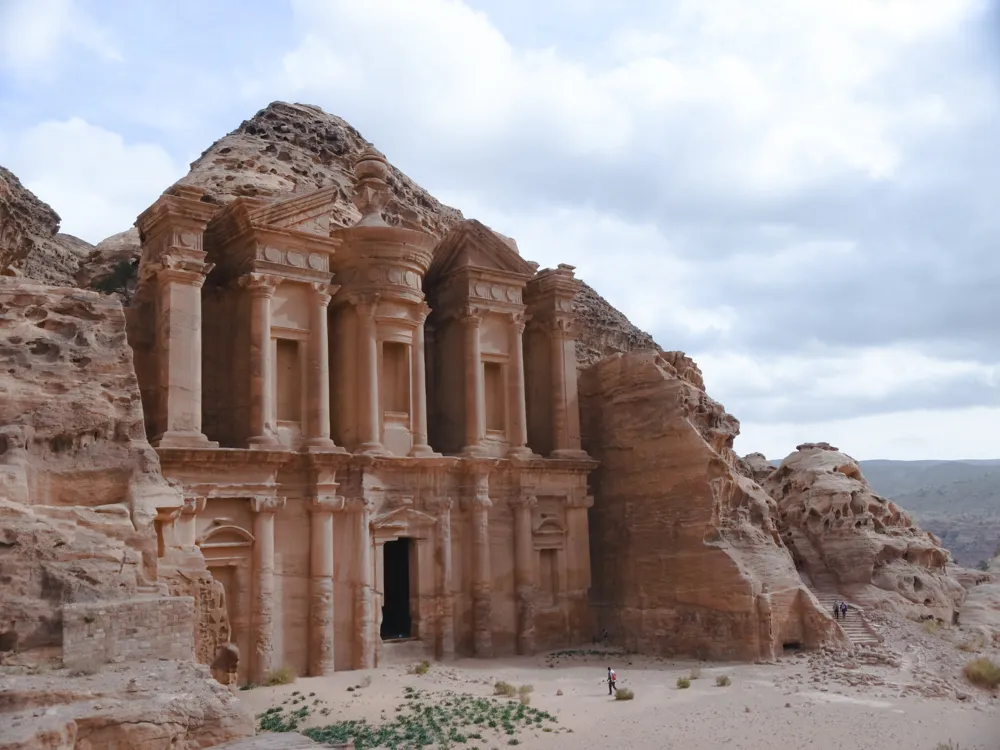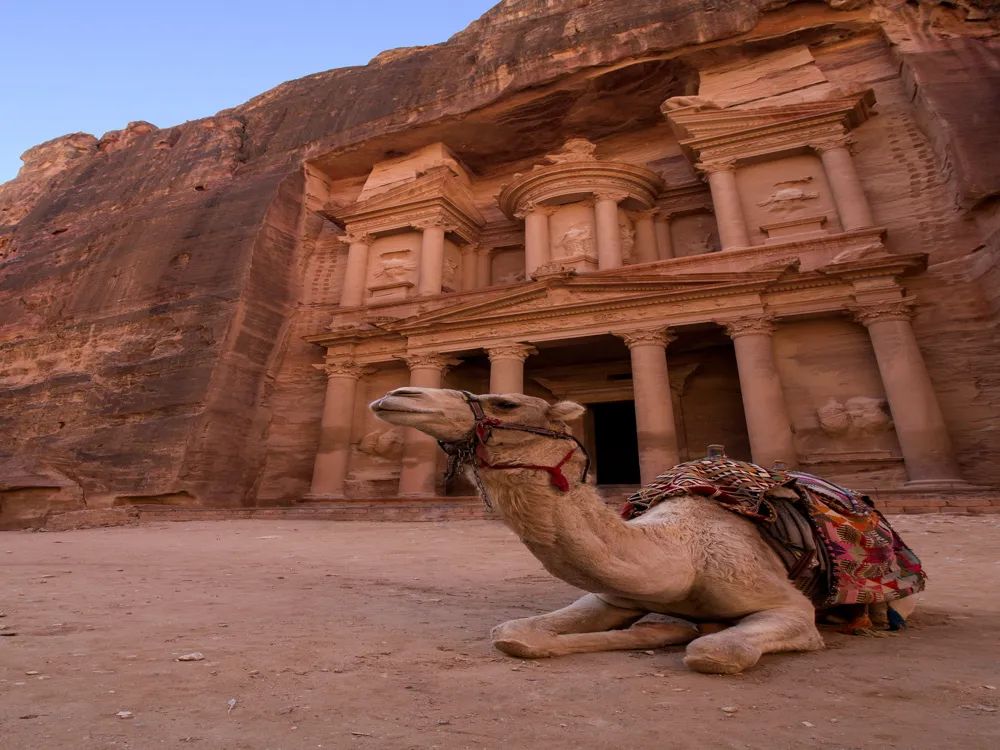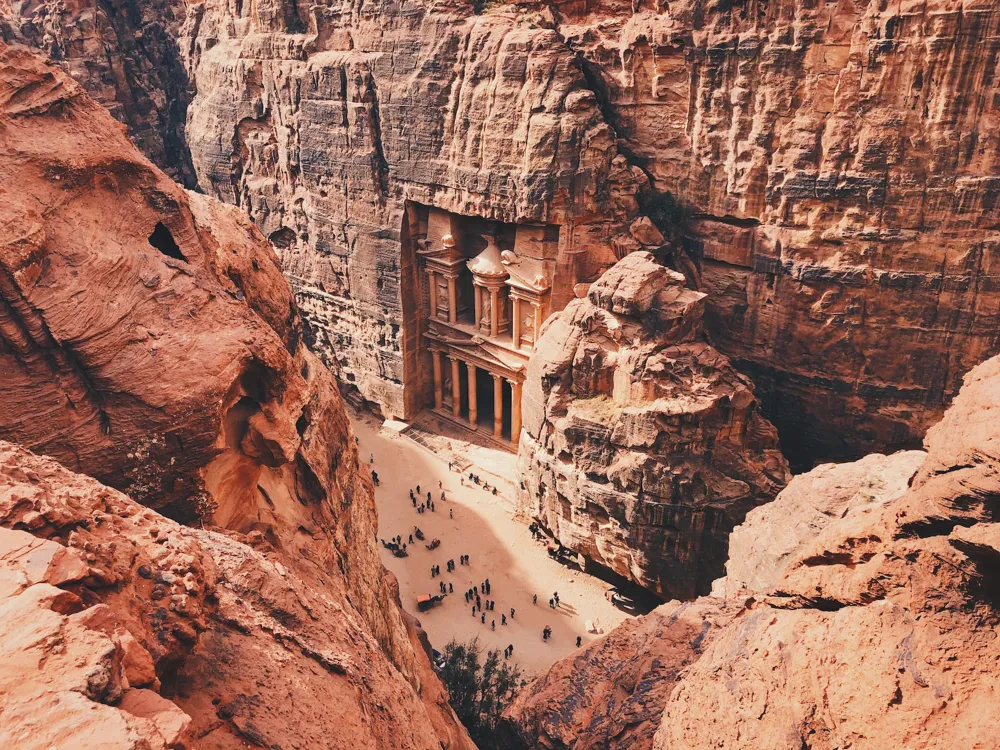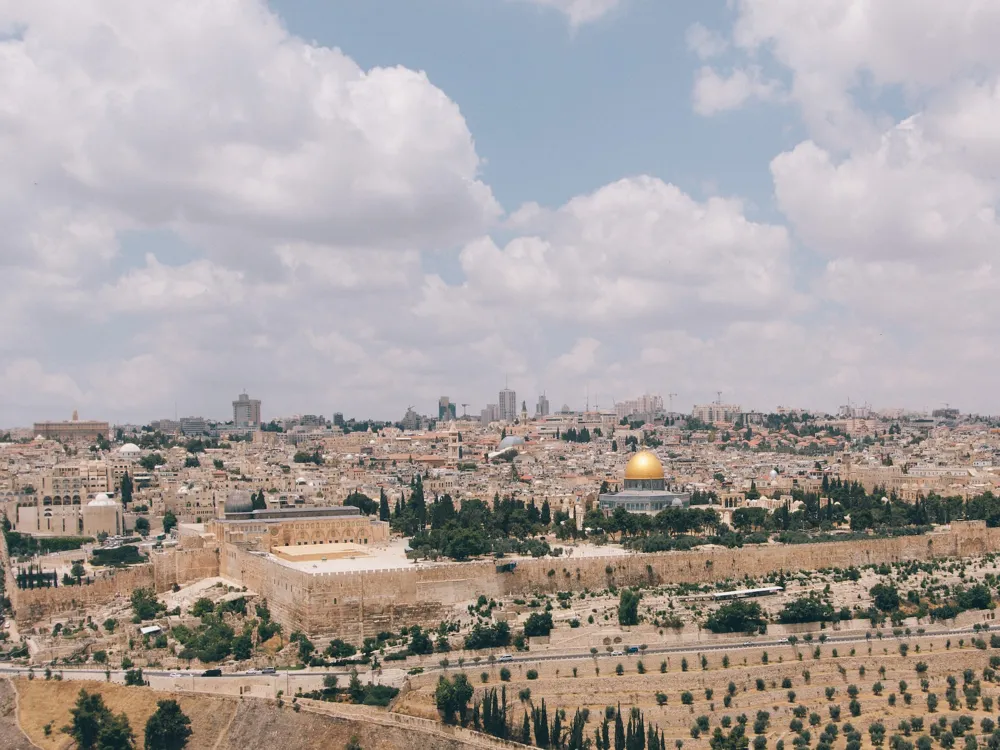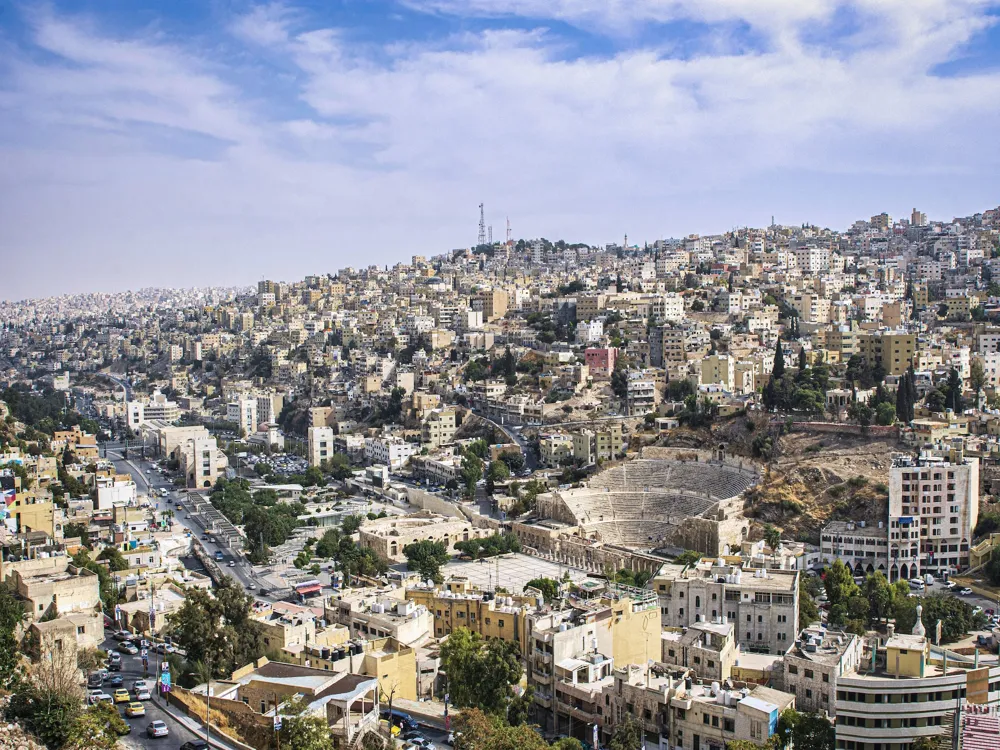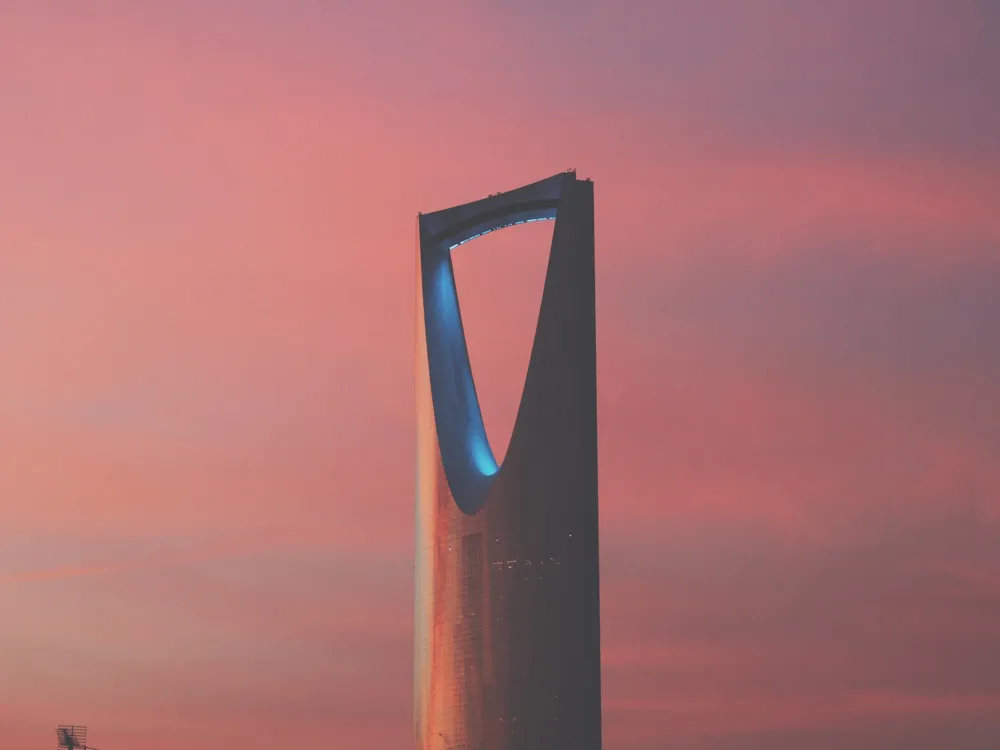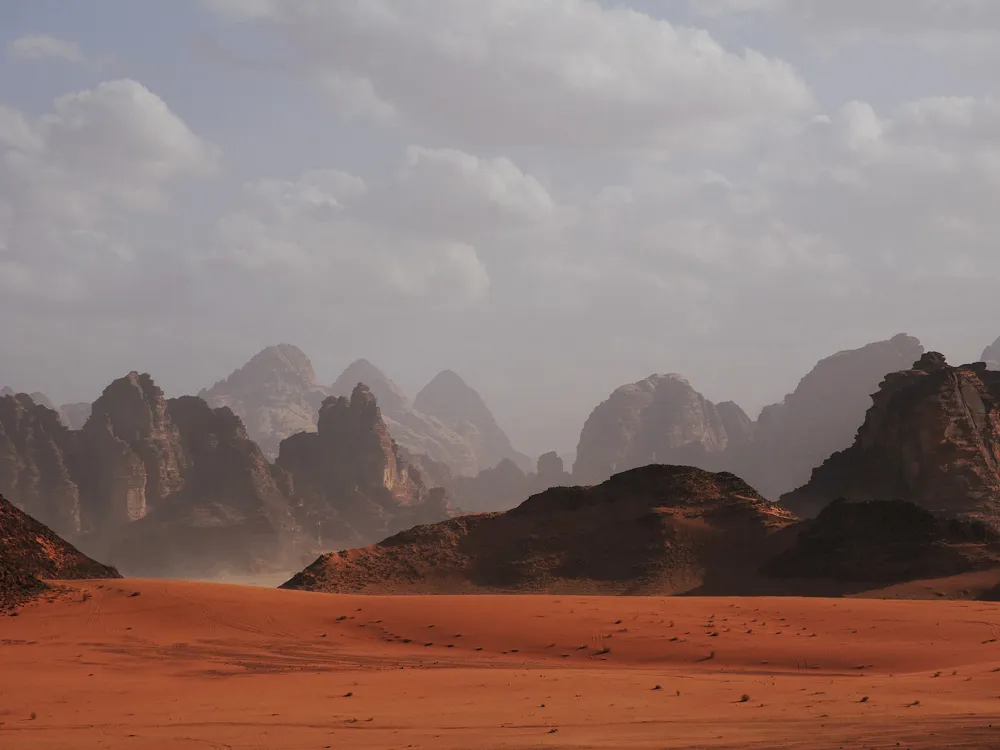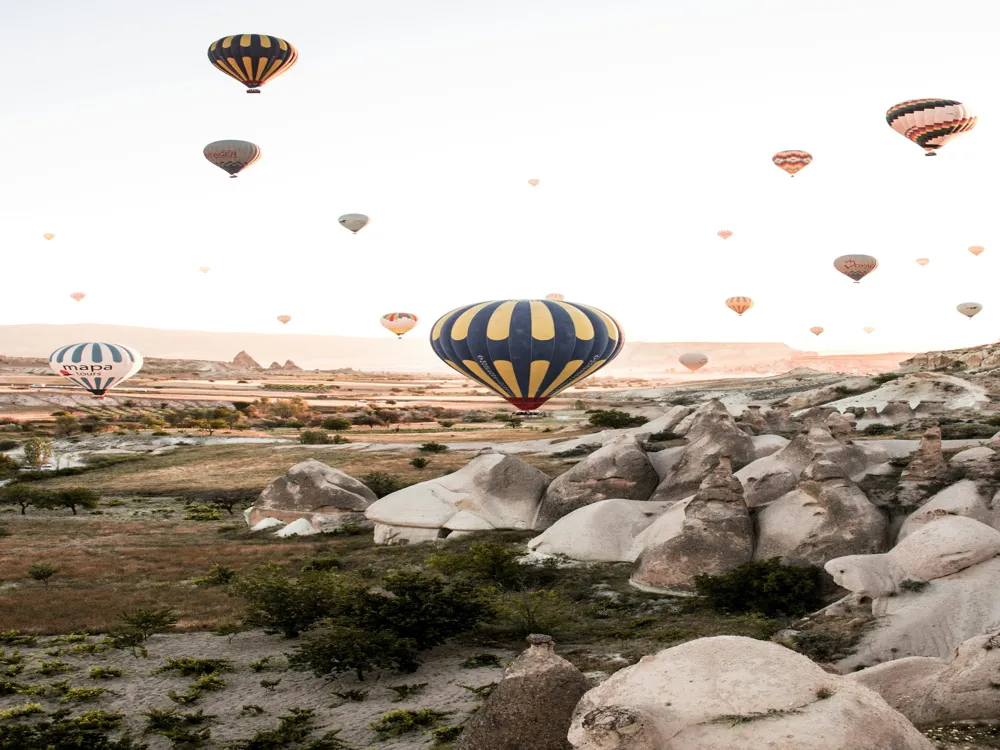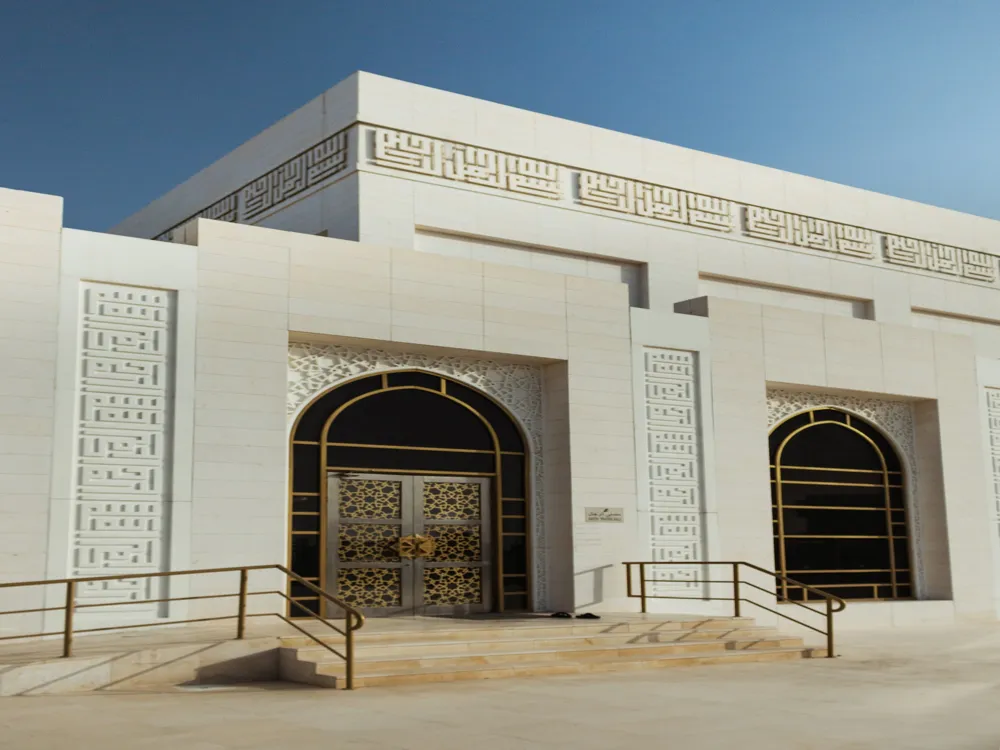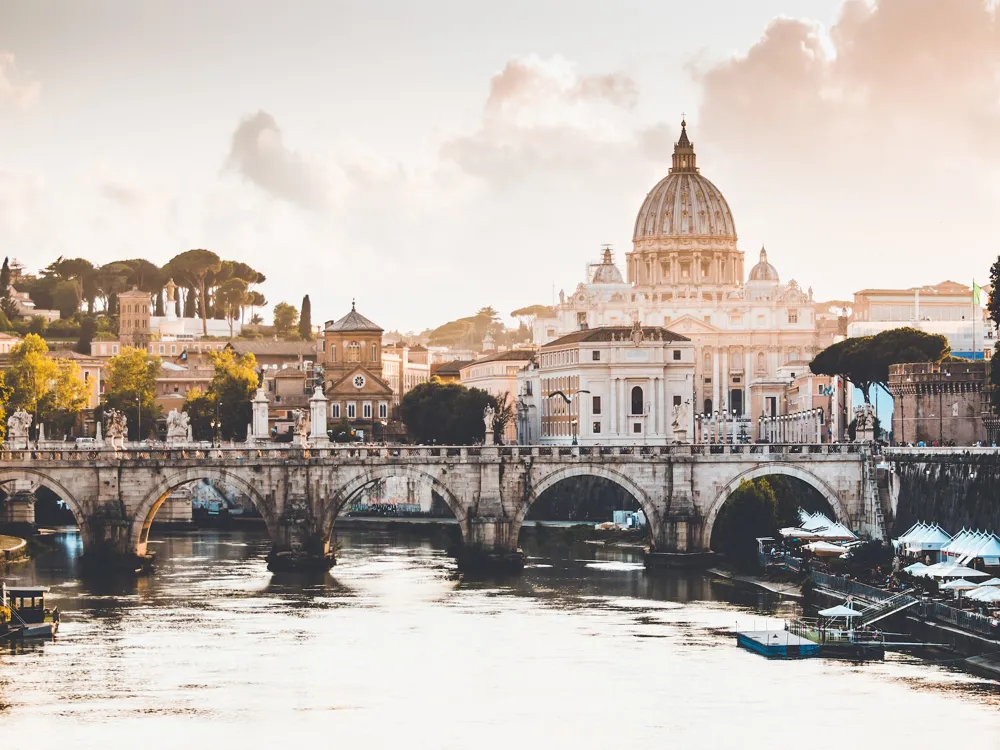Plan Your Travel To Petra
Places To Visit In Petra
Lion Triclinium
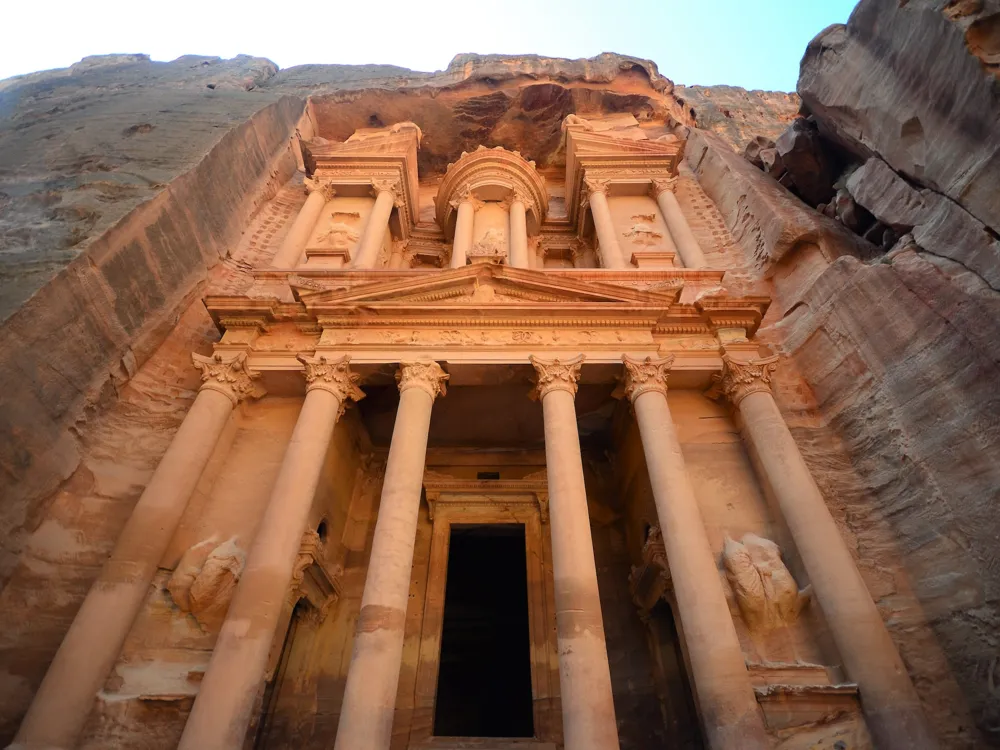
The Lion Triclinium or Lion’s Tomb is a Nabatean monument and a historic banquet hall once used for funerals. Located in a narrow canyon in Petra, it is usually visited en route to the famous El Deir monastery. It boasts a classical facade with an entrance shaped like a keyhole (due to erosion) flanked by winged lions and surrounded by pilasters featuring floral designs.
The exterior of Lion Triclinium is known for its Doric frieze, which has women’s heads carved on each side, believed to be Medusa. In addition, there is an urn on the pediment. On the inside, the structure comprises three benches, which is why it is known as a triclinium. One can climb up to get a closer look at the monument, but it is nearly impossible to go to its entrance because of the uneven rocks.
Read More
Mosesquelle
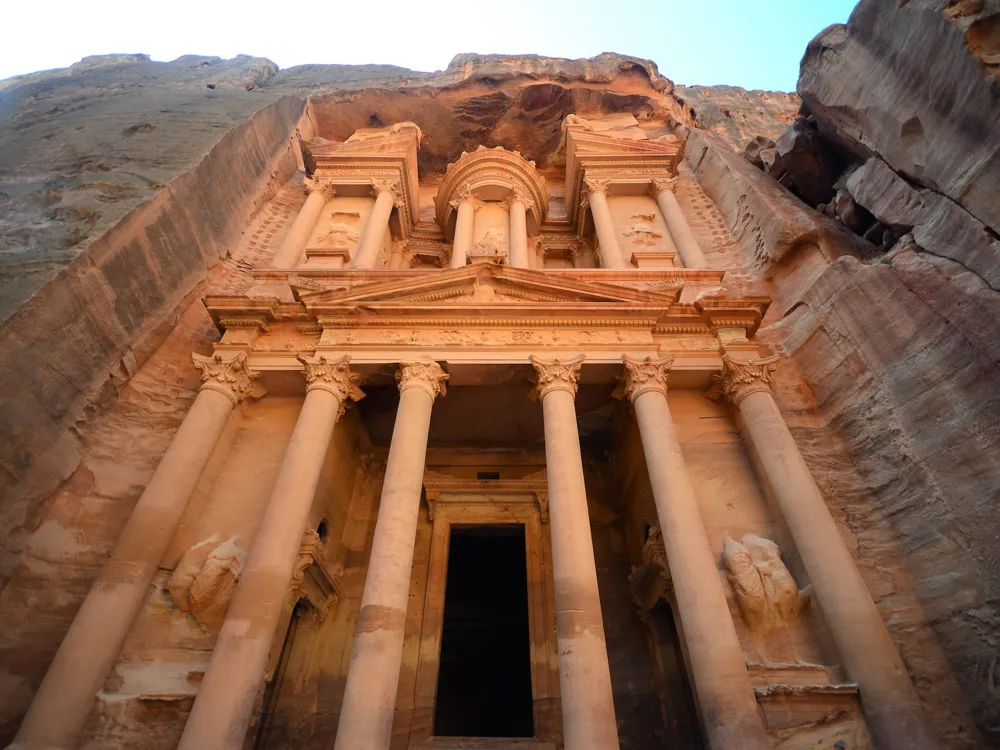
Mosesquelle, often known as Moses Spring or An Musa, is a sacred natural spring located east of Petra in Wadi Musa. It is believed to have been created by Moses, who struck the rocks with his staff which led to water coming out. This water was then used to quench the thirst of many Israelites. The rock struck by Moses is also found here.
The spring, now within a three-domed building constructed on the site, frequently attracts pilgrims. One can drink this water, use to it wash up or even collect it as a souvenir. In addition, there are fruit and olive gardens downstream that are irrigated using this water and are open to visitors.
Read More
Petra Theatre
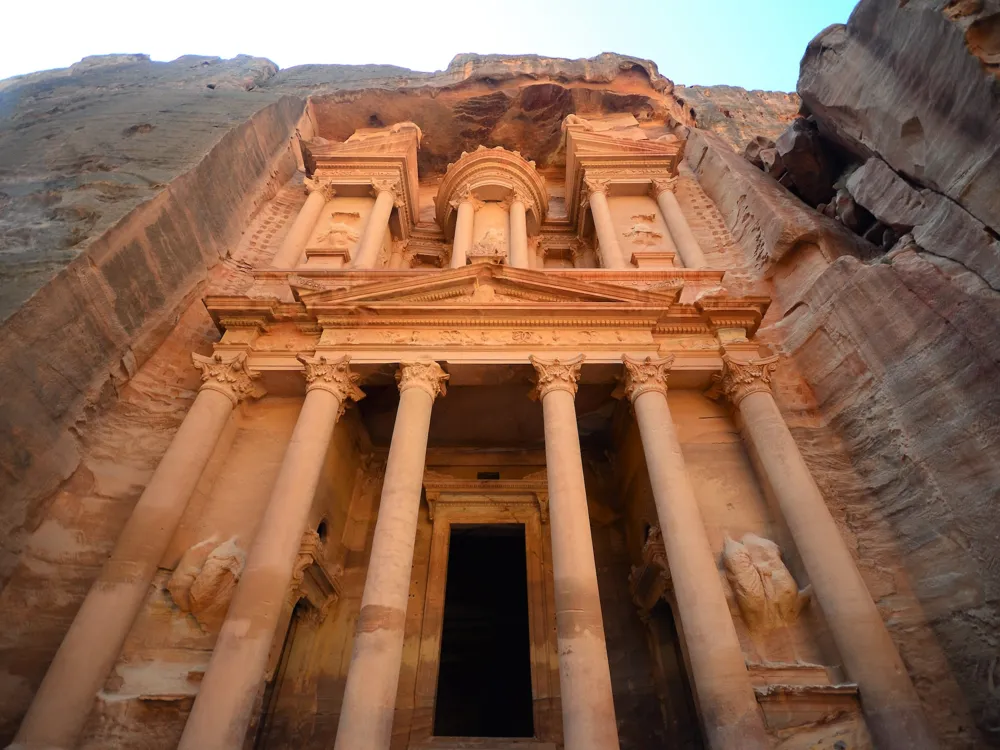
The Petra Theatre is the first Nabatean theatre dating back almost 2000 years. It lies close to the heart of Petra, Jordan. It offers excellent views of the surrounding canyon, hills, and several famous Petra rock tombs. One can also climb up the mountain opposite the theatre for marvellous views of the entire structure. It is an excellent place for photography.
The theatre was built under King Aretas alongside other monuments. Despite being constructed according to Nabatean construction practices, it has a predominantly Roman design. This massive edifice was mainly carved out of solid sandstone while certain parts like the outer wall and scaena were constructed. The seats are divided into three horizontal sections by passageways. The back walls have some holes, which were once perhaps tombs, and the capitals here feature floral designs. Unfortunately, parts of the monument, such as the stage, were damaged during an earthquake.
Read More
Obelisk Tomb
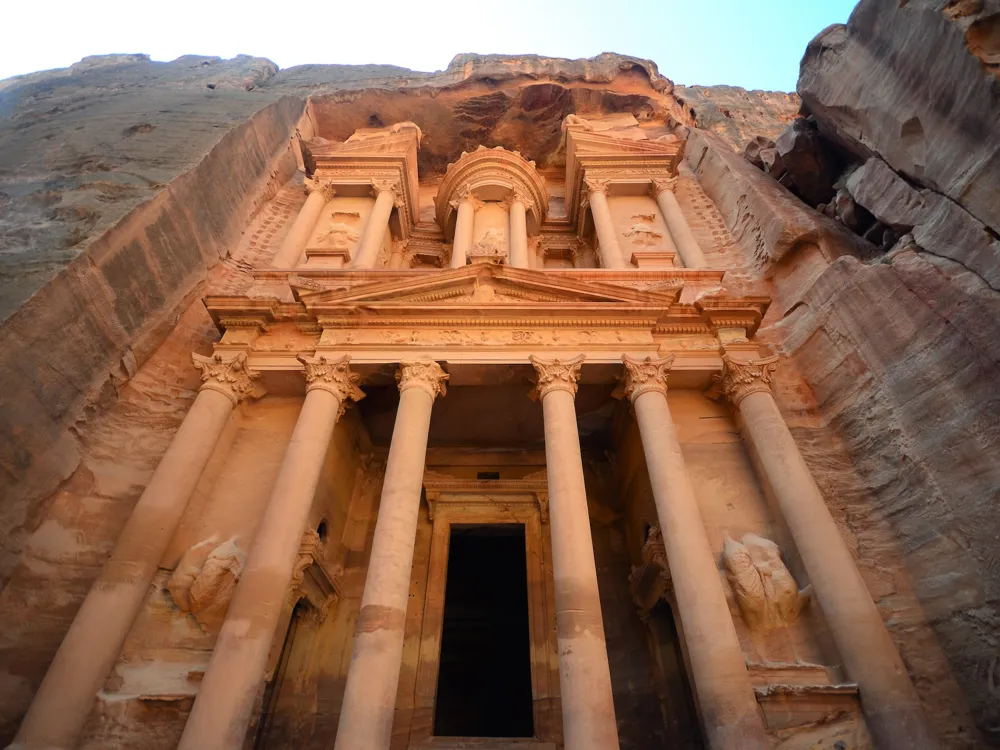
The Obelisk Tomb is a notable monument in Petra near Wadi Musa, on the way to the Siq Pass. This is an ancient tomb and funeral hall, which was sculptured from sandstone rock. Notably, the Obelisk tomb is one of the first monuments visitors see when visiting the legendary Petra city.
You will find this tomb to your left as you enter through the Siq to the narrow walkway. The whole mausoleum was remarkably carved into the rock face. There is splendid beauty and significance in this ancient tomb that is unique in Nabataean architecture. It beautifully comprises two distinct rock-cut structures, constructed correspondingly during the reign of Malchus II (40 - 70 AD). The top part is the tomb itself, whereas the bottom is known as Bab Al-Siq, which is a triclinium (a roman name for a room or hall for organizing rituals of funeral or feasts to honour the dead). The triclinium is carved in a very classical approach, affected by erosion over time. It is believed to have been carved by the Nabateans in the 1st century, much before the tomb. Visitors can explore the details of carvings. The tomb got its name from the four obelisks that stand out.
Read More
Petra By Night
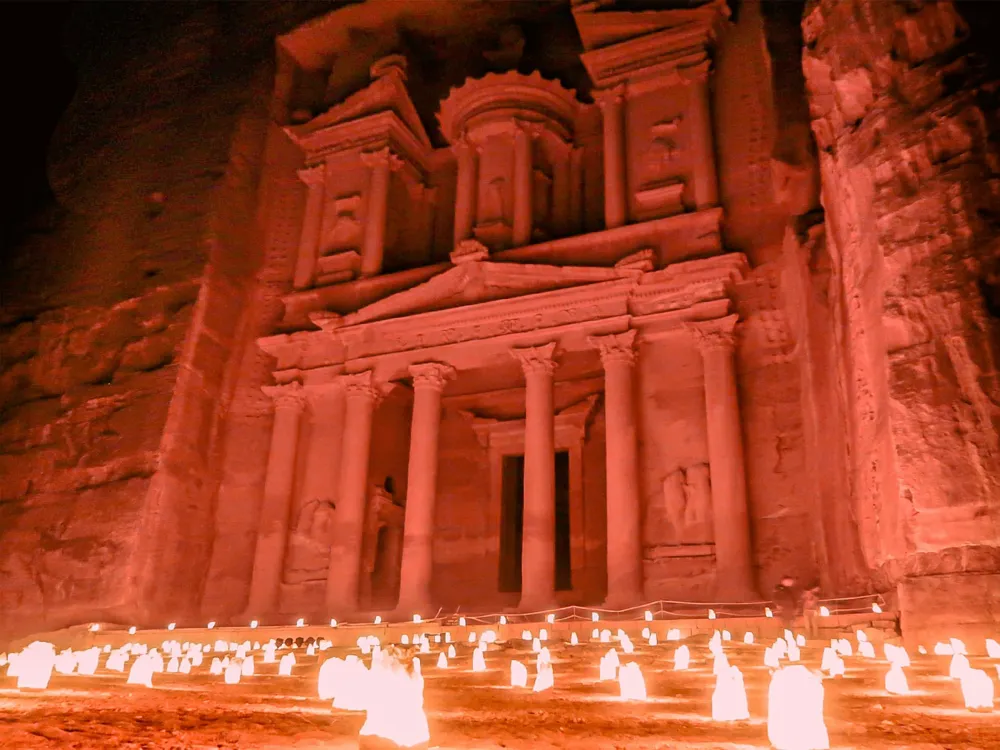
A candlelit night tour of one of the New Seven Wonders of the World, Petra, is spectacular and sublime. To visit Petra by night, you must purchase a valid Petra day ticket. Advance booking is not possible for the show as only a limited number of seats are available. The show is only available for viewing on Mondays, Wednesdays and Thursdays.
The pink city of Petra, with its magnificent cliffs and honey-hued mountains, attracts thousands of tourists during the day. Still, the treasury of this unique archaeological site, which is lit by almost 1500 candles in the night and followed by a 2-hour cultural event, is not to be missed.
Read More
Petra Museum
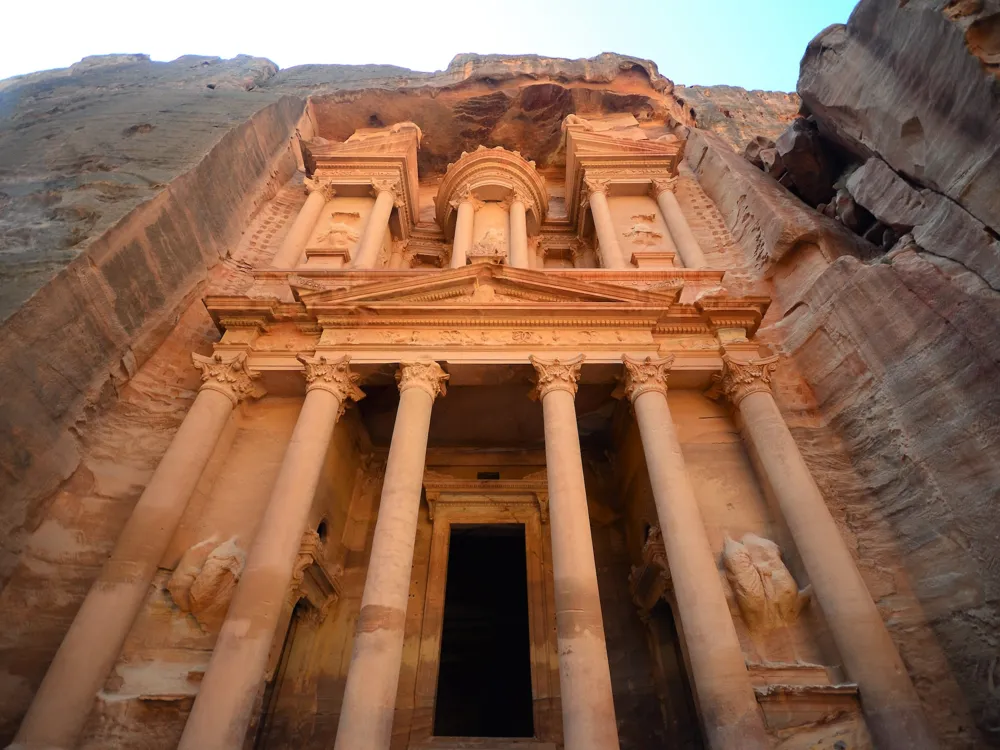
The Petra Museum is home to over 280 artefacts dedicated to Petra’s history and the Nabatean civilisation. It is located quite close to the entrance to the archaeological site of Petra in Wadi Musa. It is, therefore, recommended to visit the museum before exploring Petra itself. Some of the items here include statues, tools, coins, knives, pottery, jewellery, clothing, weights and measures, weapons, mosaics, etc.
The Petra Museum is divided into five halls that house a variety of exhibits that date back to the Antiquity and have been found through archaeological excavations. In addition, there are touch screen displays and audio-visual aids throughout the museum that provide information about the region’s past and the numerous artefacts on display here.
Read More
Qasr-Al-Bint
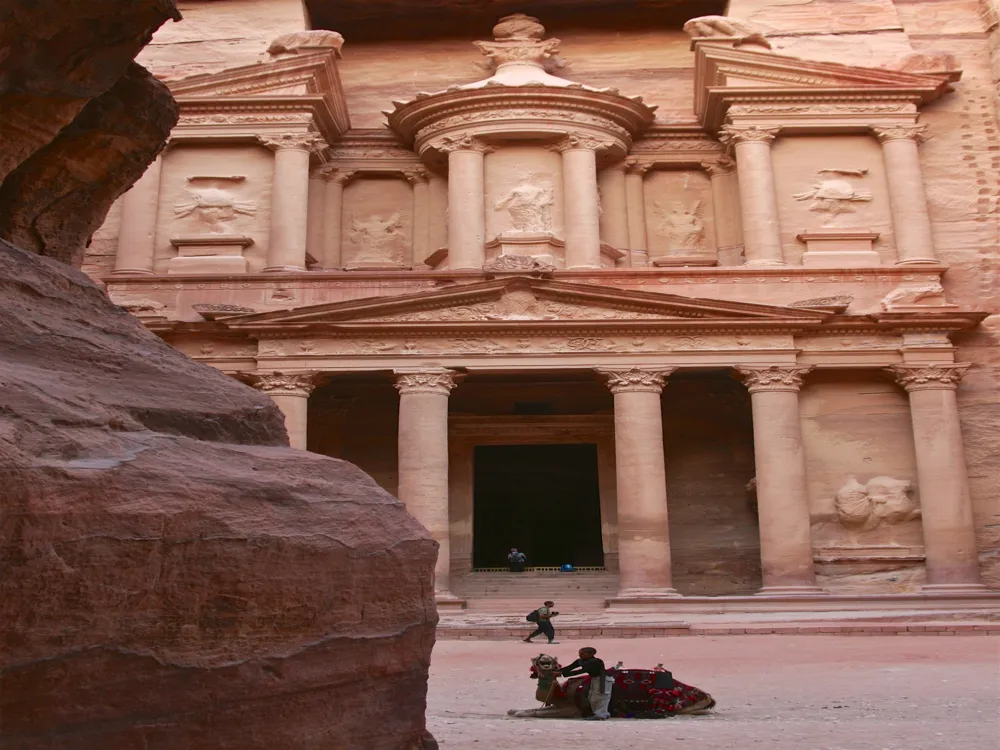
The Qasr Al-Bint is a well-known historical landmark in Petra, situated northwest of the Great Temple and southwest of the Temple of the Winged Lions. Also known as the Temple of Dushares, it is one of the still surviving ancient structures in the city.
The temple stands near the monumental gate, facing Wadi Musa. The Nabataeans constructed Qasr Al-Bint in around 30 BCE. Though the name given to this temple by the local Bedouin is Qasr Al-Bint Fir'aun, i.e., Castle of the Pharaoh's Daughter, it was primarily built as a dedication to Nabataean Gods. It is made with ashlar blocks, and a marble staircase offers access to the temple. The structure includes a pronaos (entrance), a naos (chamber), and a tripartite adyton containing the cella (the most sacred part of the temple). Remarkably, the temple is in the middle of the valley. Enjoy picturesque views of the temple and the collonaded street while climbing to the Treasury Viewpoint.
Read More
Renaissance Tomb
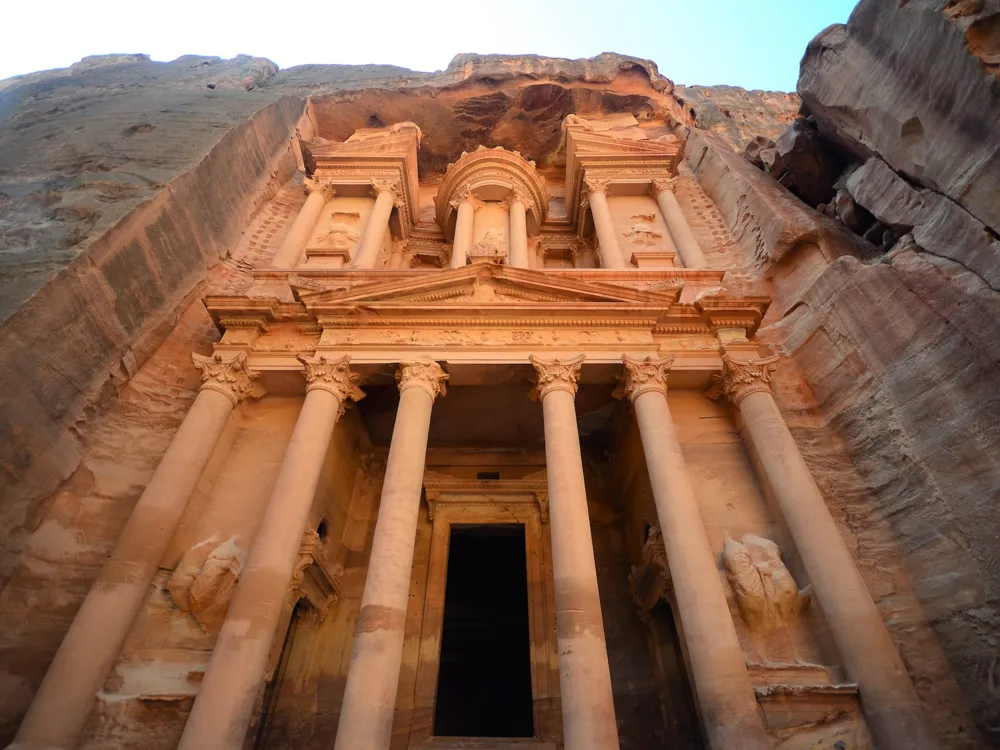
Renaissance Tomb is an archaeological landmark in Wadi Musa in Petra, Jordan. It is a 2nd Century AD tomb, known as a Renaissance tomb due to the archivolt mouldings that frame the arch above the doorway. This is the last big tomb within the High Place of Sacrifice Trail.
Renaissance Tomb exhibits the architectural elements of the European Renaissance. The track to the tomb is an off-beat track. It has a magnificent façade features an exquisite set of crowns and six Nabataean jars. Moreover, it is topped with a gable with three funerary urns at the corners. Nabataean pilasters frame the urns. Inside the tomb, there are 14 graves. The interiors are rock-carved. Visitors can adore the colourful sand stones & take photographs.
Read More
Royal Tombs
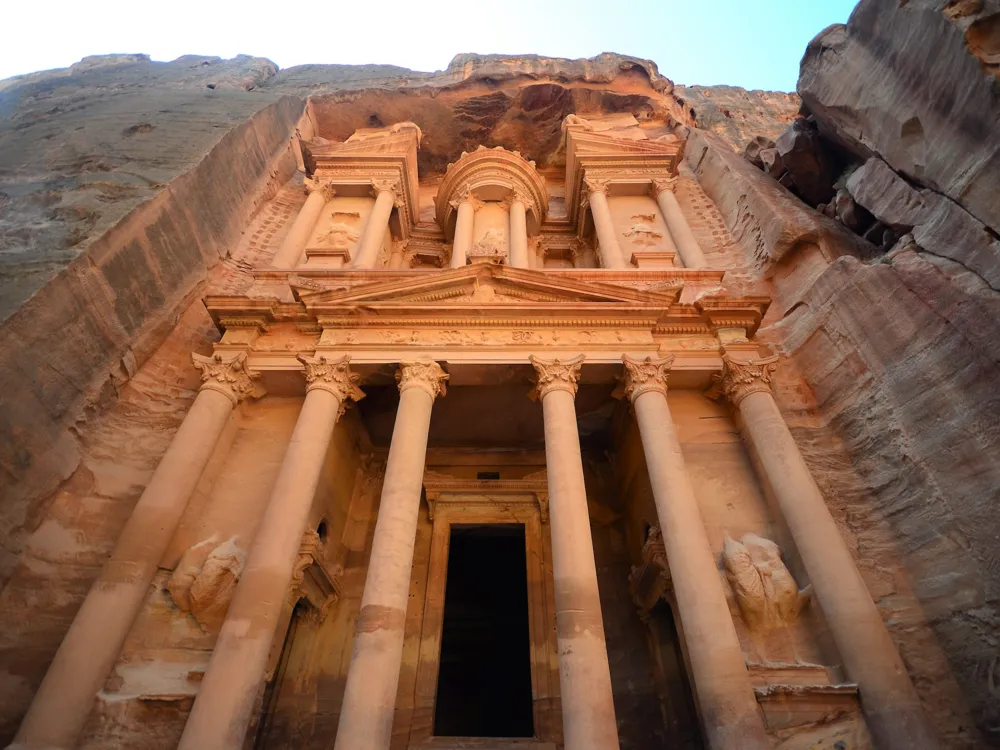
The Royal Tombs is a series of large mausoleums with majestic facades that overlook the city centre and main walkway of Petra. These are situated on the western slope of Al-Khubtha mountain. These were constructed by the Nabateans from the rose-red sandstone over 2,300 years ago.
There are four individual tombs, which are collectively known as the Royal Tombs of Petra, namely - the Urn Tomb, the Palace Tomb, the Silk Tomb, and the Corinthian Tomb. Unfortunately, due to a lack of archaeological proof, it is impossible to determine them to be related to specific Nabataean rulers. However, the size of these landmarks and their elegantly decorated facades suggest that they were constructed for wealthy & notable people in a royal context.
Read More
Sextius Florentinus Tomb
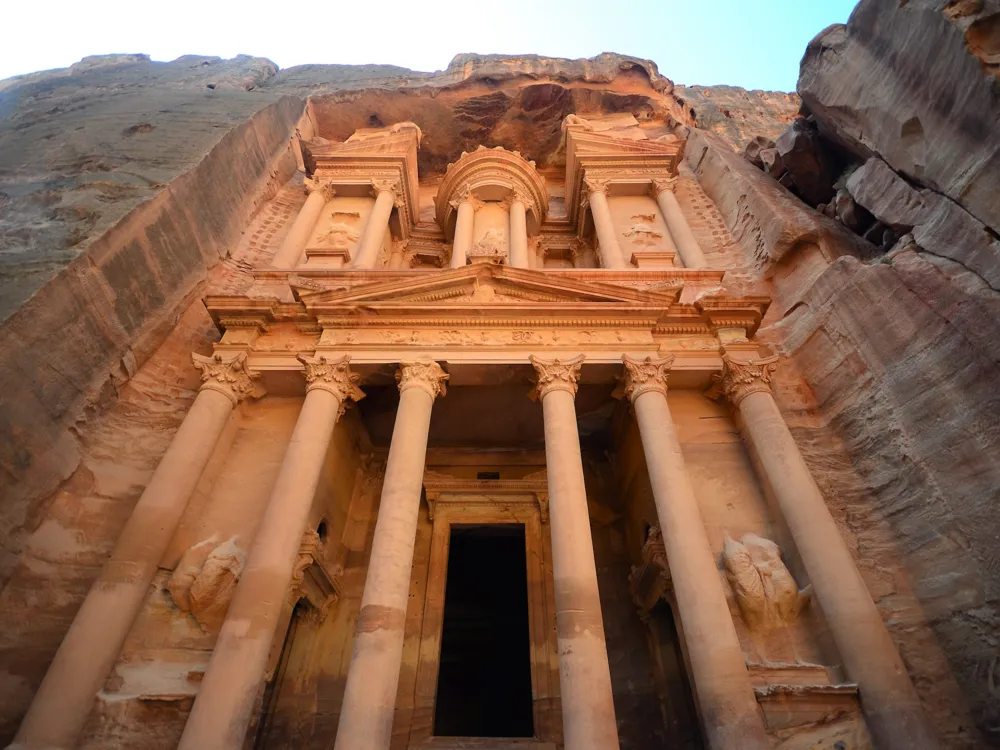
Sextius Florentinus Tomb is a cemetery situated in Wadi Musa, a little ahead of the Royal Tombs in Petra. Built between AD 126 and AD 130, its facade has Latin inscriptions indicating that it is dedicated to the Roman governor Titus Aninius Sextius Florentinus. It is primarily built in the Roman architectural style with certain Nabatean elements and unlike many other tombs around, its interiors are worth exploring.
A slightly eroded gorgon head at the centre of the facade has horned capitals and vine tendrils coming out of it. On the inside are five graves or loculi carved into the back wall and three on the wall to the right of the entrance. An old woman, often referred to as a Bedouin grandmother, sells tea at her shop nearby.
Read More
Petra Travel Packages
View All Travel Packages Petra
Nearby Places Petra
Browse Package Collections
Browse Hotel Collections











